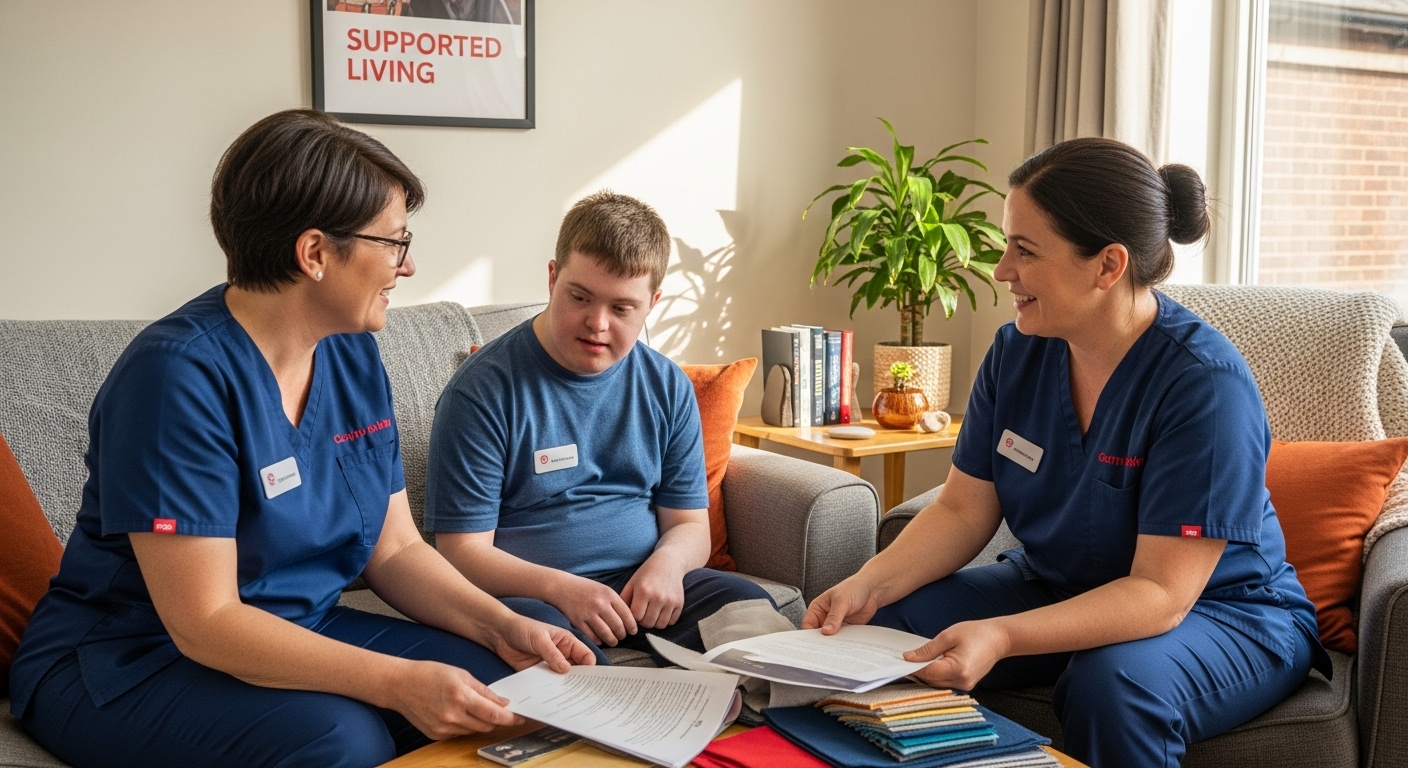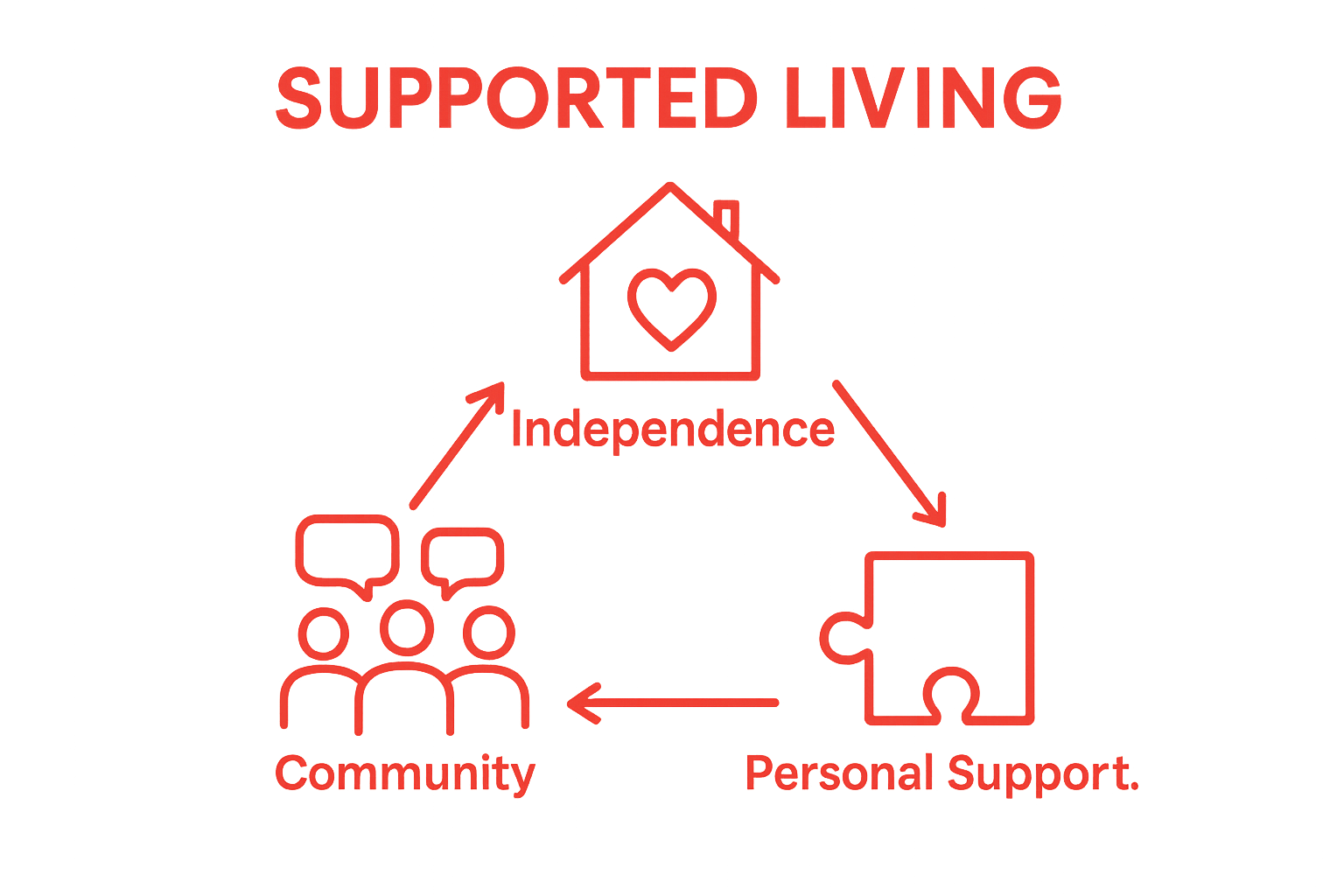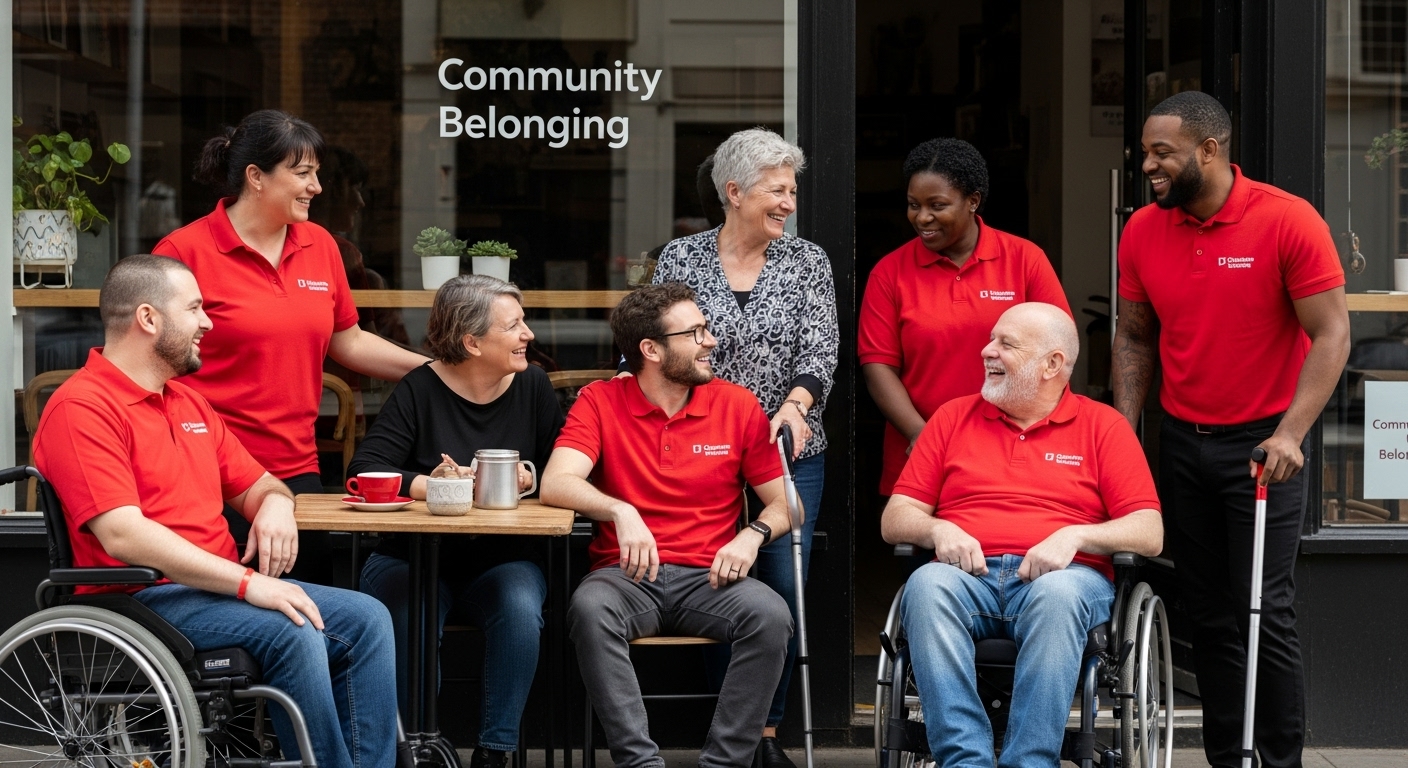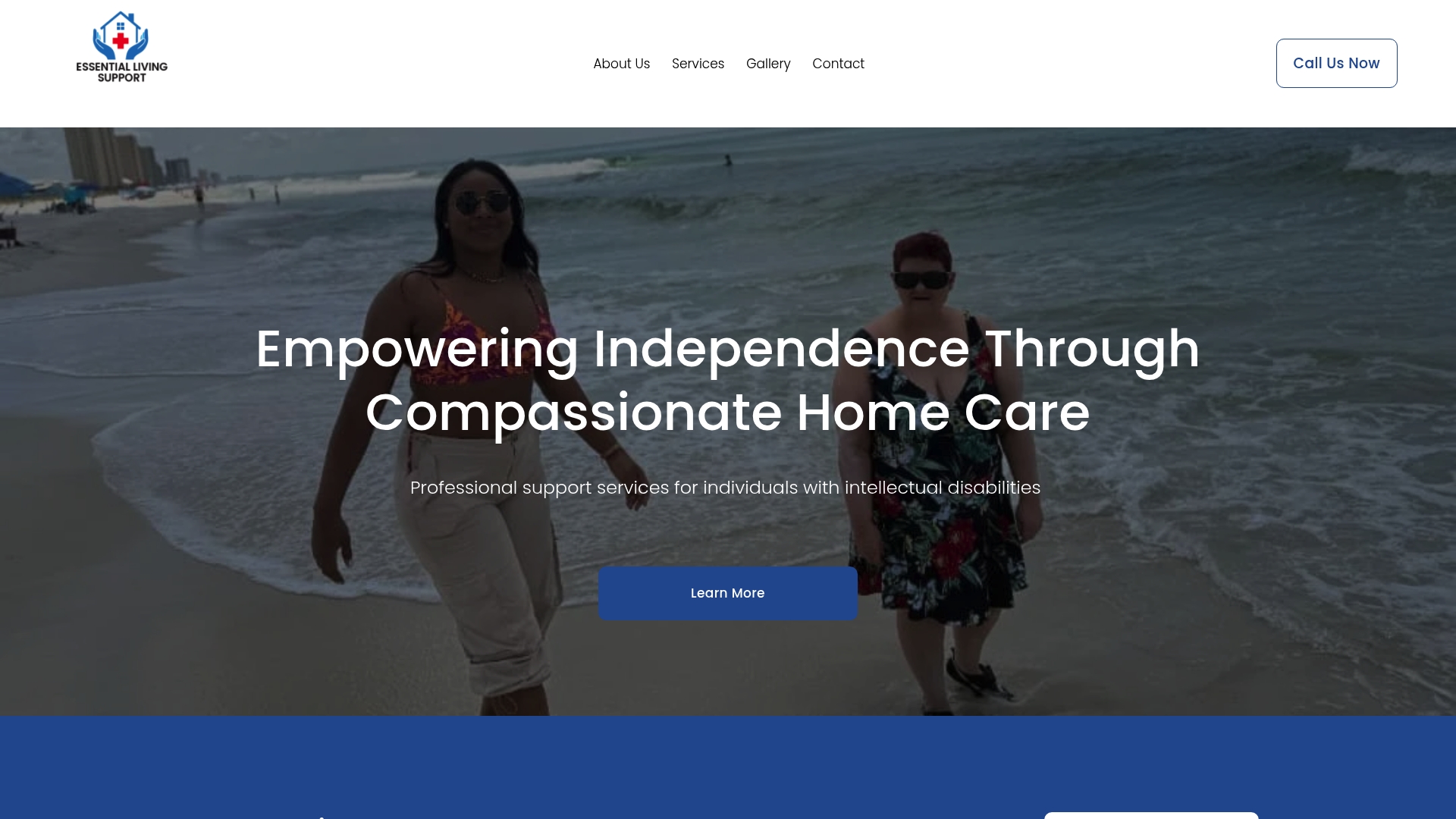Understanding Supported Living: A Comprehensive Guide

Supported living is changing how people with disabilities experience daily life. While traditional care often limits personal choices, supported living centers around person-driven plans and individual autonomy. Most people think support means dependence, but this approach actually helps individuals build more independence and stronger community connections than ever before.
Table of Contents
Quick Summary
Takeaway
Explanation
Supported living fosters individual autonomy.
It prioritizes the personal choices and preferences of individuals with disabilities, enabling them to live independently.
Personalized support plans are essential.
Each plan is tailored to address unique needs and strengths, promoting individual growth and independence.
Community integration enhances quality of life.
Active participation in the community helps reduce isolation and fosters social connections for individuals with disabilities.
Flexibility in support adapts to changing needs.
Ongoing adjustments to care strategies are crucial as individuals’ goals and capabilities evolve over time.
Technology amplifies independence in supported living.
Assistive technologies can provide additional support, helping individuals navigate daily challenges and enhancing their self-sufficiency.
What is Supported Living and Its Basic Principles?
Supported living represents a person-centered approach that empowers individuals with intellectual disabilities to live as independently as possible while receiving customized assistance tailored to their unique needs. Unlike traditional residential care models, this approach focuses on individual choice, personal autonomy, and community integration.
Defining Supported Living
At its core, supported living is a philosophy and practical approach that prioritizes the individual’s preferences, strengths, and goals. It goes beyond basic care by helping people with disabilities create their own home environment, make personal decisions, and develop life skills. The fundamental principle is providing just enough support to enable maximum independence, without creating unnecessary dependency.
The following table organizes the core principles of supported living and provides concise explanations of each, highlighting the foundational philosophy behind this service model.
Principle
Explanation
Person-Centered Support
The individual directs decisions about their own living arrangements, activities, and goals.
Responsive and Dynamic Care
Support strategies are regularly adjusted to match evolving skills, interests, and aspirations.
Emphasis on Natural Networks
Family, friends, and community resources are integrated with professional support for a holistic ecosystem.
Promotion of Dignity and Autonomy
Care is delivered to maximize individual independence and preserve personal dignity.
Social Inclusion
Services focus on fostering community participation and reducing isolation.
Key characteristics of supported living include:

Personalized support plans developed around individual needs
Flexible assistance that adapts as the person’s requirements change
Emphasis on community participation and social connections
Preservation of personal dignity and self-determination
Core Principles of Support
The framework of supported living is built on several critical principles. According to National Disability Authority, these principles ensure that support is delivered in a manner that truly empowers the individual. First, support must be person-centered, meaning the individual drives the decision-making process about their living arrangements, daily activities, and personal goals.
Second, support is designed to be responsive and dynamic. Caregivers work collaboratively with the individual, continuously adjusting support strategies to match evolving skills, interests, and aspirations. This approach recognizes that disability support is not a static service but a responsive, adaptive process.
Third, supported living emphasizes natural support networks. This means integrating family, friends, and community resources alongside professional support, creating a holistic ecosystem that promotes social inclusion and personal growth.
Ultimately, supported living transforms the traditional care paradigm by viewing individuals with disabilities not as recipients of services, but as active participants in designing their own life journey. It represents a profound shift from institutional models toward a more dignified, empowering approach to personal support.
Why Supported Living Matters for Individuals with Disabilities
Supported living represents a transformative approach that transcends traditional disability services by focusing on personal empowerment, social integration, and individual potential. It addresses critical gaps in traditional care models by recognizing that every person, regardless of disability, deserves autonomy, dignity, and meaningful community participation.
Quality of Life Enhancement
For individuals with disabilities, supported living is more than a service model it is a pathway to genuine self-determination. By providing tailored assistance that adapts to individual needs, this approach enables people to develop critical life skills, make personal choices, and pursue their unique aspirations. The goal is not just survival, but creating a rich, fulfilling life experience.
Key benefits of supported living include:
Increased personal independence and self-confidence
Opportunities for skill development and personal growth
Reduced social isolation and improved community connections
Enhanced emotional and psychological well-being
Breaking Institutional Barriers
Traditional institutional care often unintentionally strips individuals with disabilities of their agency and personal identity. According to Massachusetts Disability Services, supported living challenges these systemic limitations by creating personalized support frameworks that respect individual preferences and potential.
This approach recognizes that disability does not define a person’s worth or capabilities. Instead, it focuses on removing environmental and societal barriers that limit personal achievement. Support is strategically designed to bridge gaps, not create dependency. Caregivers become facilitators of independence, helping individuals develop skills, make decisions, and navigate complex social environments.
Supported living also addresses the broader societal challenge of inclusivity. By enabling individuals with disabilities to live independently, participate in community activities, and contribute meaningfully, this model challenges long-standing perceptions about disability. It transforms the narrative from limitation to potential, demonstrating that with appropriate support, individuals can lead rich, autonomous lives.
This table compares traditional institutional care with the supported living approach, helping clarify the distinctions in philosophy, support structure, and outcomes for individuals with disabilities.
Feature
Traditional Institutional Care
Supported Living Approach
Decision-Making
Led by staff or organization
Driven by individual preferences
Independence
Limited, with high supervision
Emphasizes autonomy and personal growth
Environment
Group or institutional settings
Individualized, community-based living arrangements
Social Integration
Often restricted or limited
Active participation encouraged
Support Networks
Primarily professional caregivers
Integrates family, friends, and community resources
Adaptability
Rigid care plans
Flexible, regularly updated support strategies
Sense of Dignity
May be diminished by lack of choice
Preserved through person-centered planning
Ultimately, supported living matters because it represents a fundamental human right: the ability to live with dignity, make personal choices, and pursue individual dreams. It is not just a service model, but a profound statement of human value and potential.
How Supported Living Works: Key Components and Services
Supported living is a dynamic service model that provides comprehensive, personalized assistance designed to help individuals with disabilities achieve maximum independence and quality of life. Unlike traditional care approaches, this framework adapts flexibly to meet each person’s unique needs, preferences, and personal development goals.
Personalized Support Planning
Support planning forms the foundation of the supported living approach. This process involves detailed collaboration between the individual, their family, and professional support coordinators to create a holistic, individualized service strategy. The planning phase carefully assesses personal strengths, challenges, aspirations, and specific support requirements.
Key elements of personalized support planning include:
Comprehensive individual assessment
Goal-setting with input from the individual
Identification of necessary support services
Regular review and adaptation of support strategies
Service Delivery and Support Mechanisms
Supported living services encompass a wide range of assistance designed to promote independence and personal growth. According to International Journal of Environmental Research and Public Health, these services typically include 24/7 availability of professional support, tailored to the individual’s specific needs.
Critical support services may involve:
Personal care assistance
Skill development and training
Community integration support
Health and wellness management
Assistance with daily living activities
Employment and educational support
Technology and Adaptive Support
Modern supported living increasingly incorporates technological solutions to enhance independence. Assistive technologies like smart home devices, communication tools, and specialized software can help individuals with disabilities navigate daily challenges more effectively. These technologies are carefully selected and integrated to complement personal support strategies, providing additional layers of independence and safety.
The ultimate goal of supported living is not just to provide care, but to empower individuals to lead fulfilling, self-directed lives.
By combining personalized planning, comprehensive services, and adaptive technologies, this approach transforms traditional disability support into a dynamic, person-centered experience that celebrates individual potential and autonomy.
Understanding the Role of Community in Supported Living
Community plays a transformative role in supported living, serving as a critical ecosystem that enables individuals with disabilities to develop meaningful connections, pursue personal growth, and experience genuine social integration. Far more than a physical environment, community represents a dynamic network of relationships, opportunities, and shared experiences that shape individual development and well-being.
Social Connection and Belonging
Community involvement is fundamental to the supported living philosophy. It goes beyond mere physical proximity, focusing on creating authentic, reciprocal relationships that foster a genuine sense of belonging. For individuals with disabilities, community participation is not just desirable but essential for personal development, self-esteem, and overall quality of life.
Key aspects of social connection include:
Building meaningful interpersonal relationships
Developing social skills through real-world interactions
Creating opportunities for mutual understanding
Challenging societal perceptions about disability
Breaking Social Barriers
Supported living recognizes that community integration requires proactive strategies to overcome historical social exclusion. According to PubMed Research, social support significantly influences community participation for individuals with disabilities, highlighting the importance of creating inclusive environments that welcome diverse abilities.
Community integration strategies often involve:
Collaborative risk management
Public education and awareness programs
Creating accessible community spaces
Supporting social skill development
Facilitating meaningful volunteer and employment opportunities
Collaborative Support Networks
Effective community involvement in supported living requires a holistic approach that connects multiple stakeholders. Families, professional caregivers, local organizations, employers, and community members must work together to create supportive ecosystems that recognize and celebrate individual potential.
The ultimate goal is to transform community perception from a perspective of limitation to one of potential and inclusion. By fostering environments that value diversity, provide opportunities, and support individual growth, supported living demonstrates that community is not just a location, but a dynamic, interconnected experience of human potential.

Real-World Examples of Supported Living in Action
Supported living transitions from theoretical concept to practical reality through diverse, innovative approaches that demonstrate the transformative potential of personalized disability support. These real-world examples showcase how individuals with disabilities can achieve remarkable independence and personal growth when provided with tailored, compassionate assistance.
Individual Living Arrangements
Supported living manifests through multiple residential models, each designed to match individual preferences and capabilities. These arrangements range from completely independent apartments with periodic support to shared living environments with more intensive assistance.
Key living arrangement variations include:
Solo living with scheduled professional support
Shared housing with peer residents
Family-based residential settings
Transitional living environments
Customized apartment modifications
Successful Integration Strategies
According to Australian Disability Research, supported living arrangements can be categorized into four primary models: individuals living alone, co-residency situations, relationship-based living, and host family configurations. Each model demonstrates unique approaches to promoting independence while ensuring necessary support.
Successful integration typically involves:
Comprehensive individual assessment
Personalized support planning
Ongoing skill development
Regular performance evaluations
Adaptive support mechanisms
Technology and Community Collaboration
Modern supported living increasingly leverages technology and community partnerships to enhance individual autonomy. Smart home technologies, communication devices, and assistive software enable greater self-sufficiency. Meanwhile, collaborative relationships with local organizations, employers, and community resources create comprehensive support networks.
These real-world examples illustrate that supported living is not a one-size-fits-all solution, but a flexible, dynamic approach that recognizes each individual’s unique potential.
Below is a table categorizing the various types of living arrangements presented in the article, along with a brief description of each to clarify how supported living can be adapted for different needs.
Living Arrangement Type
Description
Solo Living
Individual lives independently with scheduled, periodic professional support.
Shared Housing
Individual lives with peer residents, sharing support and resources as needed.
Family-Based Setting
Residence with family members, enhanced by tailored support services.
Transitional Environment
Temporary or short-term living designed to build skills for greater independence.
Customized Apartment
Modified living space to accommodate unique accessibility and support requirements.
Co-Residency Situation
Individual lives with a support worker or roommate who provides daily assistance.
Host Family Configuration
Individual lives with a non-family host who offers support in a family-like environment.
Bring Personalized Supported Living to Life With Essential Living Support
Are you searching for real solutions that help your loved one with intellectual disabilities live more independently while feeling safe and connected? The article you just read highlights the challenges of traditional care and the importance of person-centered support, community integration, and dignity in daily life. At Essential Living Support, we understand that each person’s journey is unique. Our expert caregivers tailor individualized plans, assist with developing life skills, and foster opportunities for meaningful community involvement, addressing the exact goals described throughout this comprehensive guide.

Let us help your family shift from stress and uncertainty to confidence and genuine independence. Learn more about our trusted services by visiting the Essential Living Support homepage. Ready to take the next step right now? Contact us today to discuss a personalized care plan, and experience the difference that compassionate, dedicated support can make.
Frequently Asked Questions
What is supported living?
Supported living is a person-centered approach allowing individuals with intellectual disabilities to live as independently as possible while receiving tailored assistance based on their unique needs. It emphasizes personal choice, autonomy, and integration into the community.
How does supported living enhance quality of life for individuals with disabilities?
Supported living enhances quality of life by promoting independence, self-confidence, and personal growth. It focuses on providing tailored assistance for life skills development, fostering social connections, and reducing isolation, ultimately leading to a fulfilling life experience.
What are the core principles of supported living?
The core principles of supported living include person-centered support, responsive care that adapts to individual needs, and emphasis on natural support networks involving family and community, all aimed at empowering individuals with disabilities to take charge of their own lives.
How does community play a role in supported living?
Community plays a vital role in supported living by providing a network of relationships and opportunities that foster social integration and personal growth. Participating in community activities helps individuals with disabilities build meaningful connections and enhances their overall well-being.
